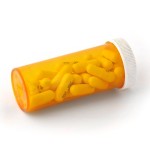How to Cope With Vaginal Dryness
Tuesday, March 23rd, 2010As we age and enter perimenopause, falling estrogen levels result in thinning of vaginal tissue, causing familiar symptoms for some women: burning, itching and dryness. Vaginal dryness can be particularly problematic for women in terms of intimacy. Women may notice that, as they enter into perimenopause, their level of moisture during intercourse may dramatically decrease. Some women experience discomfort during vaginal penetration, a reduction in pleasure and even a small amount of bleeding during or after intercourse.
Vaginal dryness need not signal an end to intimacy. There are products available to ease the discomfort of vaginal dryness. Using a water-based lubricant will replace moisture temporarily and increase comfort. Vaginal moisturizers applied regularly can keep the vaginal tissues moist and supple. There are many brands available, and several may need to be tried before finding the right one. Should neither of these remedies ease the symptoms, a visit to the doctor may be in order to rule out any other problems that may be causing the symptoms, such as a urinary tract infection.
Some women prefer to use natural supplements to ease the symptoms of perimenopause, including vaginal dryness. PreMenora is an all-natural twice daily formulation of 10 different ingredients created specifically to target the symptoms of perimenopause. To learn more about how PreMenora and PreMenora+ can relieve menopausal symptoms, visit http://premenora.predisease.com/.


